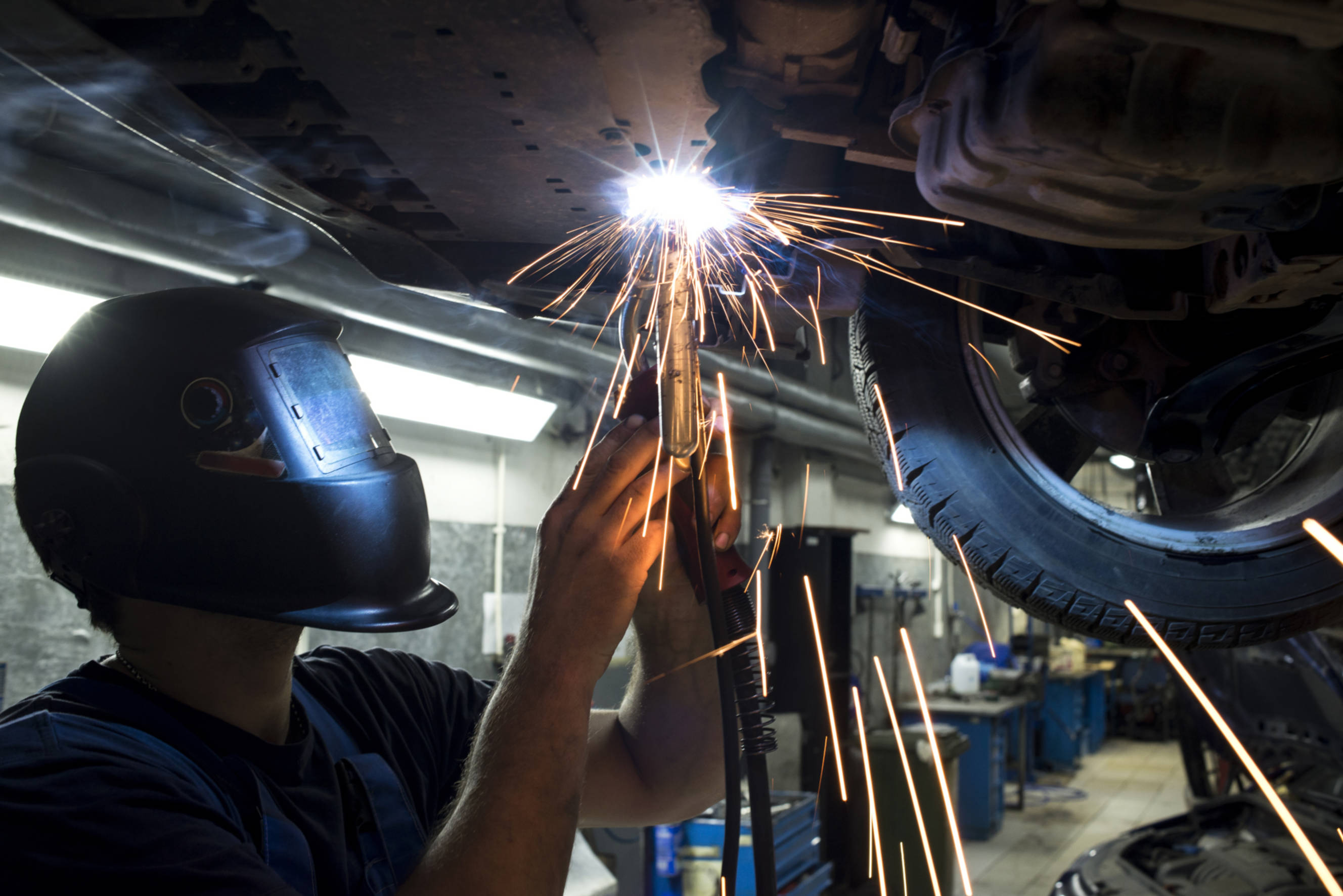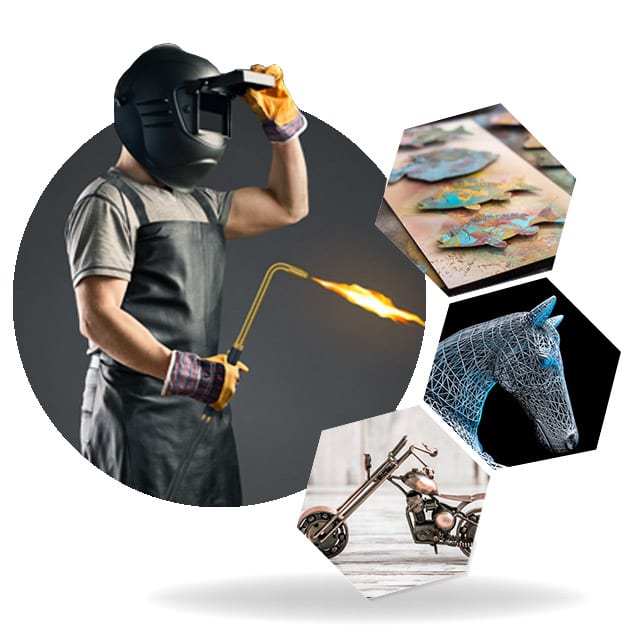Ways to minimize distortion in Montana Mobile Welding and Repair Welding projects
Wiki Article
Common Welding Repair Issues and Exactly How to Address Them Properly
Welding repairs commonly experience a series of problems that can threaten the integrity of the end product. Usual issues include poor penetration, porosity, and imbalance, among others. Each problem offers unique challenges that require specific techniques for resolution. Comprehending these problems is vital for welders intending to boost their abilities and outcomes. This conversation will explore these common welding repair work problems and effective approaches to address them.Poor Penetration
Insufficient penetration happens when the weld steel falls short to completely fuse with the base material, leading to weak joints and potential structural failings. This problem frequently stems from inadequate warmth input, wrong electrode angle, or incorrect welding speed. Welders might come across poor penetration as a result of a mistake of the necessary parameters for a certain product density or type. In addition, contamination on the base product's surface can hinder reliable bonding, exacerbating the trouble. To resolve inadequate penetration, welders ought to ensure proper setups on their tools and keep a tidy work surface. Regular evaluation of welds is suggested to identify any shortages early, permitting for prompt adjustments and the prevention of endangered structural honesty in welded assemblies.Porosity
Porosity is a typical defect in welded joints that shows up as small gas bubbles caught within the weld metal. This issue can jeopardize the stability of the weld, causing minimized stamina and potential failing under stress. Belgrade Welding. Porosity commonly emerges from contamination, dampness, or inappropriate welding strategies, which permit gases to escape right into the liquified weld pool. To address porosity, welders must ensure appropriate surface prep work, keep a tidy workplace, and utilize appropriate welding criteria. In addition, picking the appropriate filler material and shielding gas can mitigate gas entrapment. Routine inspection and screening of welds can assist determine porosity early, ensuring timely rehabilitative activities are taken, thereby protecting the top quality and integrity of the welded frameworkImbalance
Misalignment in welding can occur from various variables, consisting of incorrect configuration and thermal growth. Recognizing the origin is important for effective resolution. Numerous adjustment strategies are offered to realign parts and guarantee structural integrity.Causes of Misalignment
Welding misalignment typically comes from a range of underlying problems that can jeopardize structural honesty. One primary cause is improper fit-up of elements before welding, which can lead to voids and unequal surface areas. Variations in thermal development throughout the welding procedure can also result in distortion, especially if the materials being joined have various coefficients of expansion. In addition, inadequate fixturing and clamping might stop working to hold parts safely in area, leading to movement throughout welding. Badly kept equipment, consisting of welding equipments and devices, might introduce variances in the weld bead, more adding to misalignment. Finally, operator mistake, coming from inadequate training or experience, can additionally play a significant role in producing misaligned welds.Correction Techniques Offered
Dealing with imbalance efficiently calls for a combination of restorative techniques tailored to the particular issues handy. One typical method is making use of fixtures or jigs to hold parts in the proper position throughout welding, making certain consistent positioning. In addition, preheating the materials can assist decrease distortion and enhance fit-up. For substantial imbalance, mechanical adjustment methods, such as utilizing hydraulic jacks or clamps, can be employed to correct the setting prior to welding. Post-weld warm therapy may also be essential to relieve anxieties brought on by misalignment. Finally, mindful examination and change during the arrangement stage can avoid misalignment issues from ending up being significant problems, advertising a smoother welding process and improving general structural integrity.Distortion
Distortion is a typical obstacle in welding that can arise from numerous aspects, consisting of irregular heating and cooling. Understanding the root causes of distortion is vital for carrying out effective prevention methods. Addressing this issue not just enhances architectural integrity however likewise enhances the total quality of the weld.Sources of Distortion
When subjected to the intense warmth of welding, materials typically undertake changes that can bring about distortion. This phenomenon primarily occurs from thermal expansion and tightening throughout the welding procedure. As the weld area warms up, the product increases; upon air conditioning, it gets, which can create interior stress and anxieties. In enhancement, unequal heating across a workpiece can aggravate these stresses, causing bending or bending. The kind of material also plays a substantial duty; steels with varying thermal conductivity and coefficients of development may respond in a different way, resulting in unpredictable distortions. Inadequate joint design and insufficient fixturing can contribute to imbalance throughout welding, increasing the chance of distortion. Recognizing these reasons is important for effective welding repair and prevention approaches.Prevention Techniques
Efficient avoidance methods for distortion during welding focus on managing warm input and ensuring appropriate joint design. Preserving a constant warm input aids to decrease thermal expansion and contraction, which can cause distortion. Making use of strategies such as pre-heating the work surface can additionally reduce the temperature slope, promoting consistent heating. In addition, choosing suitable joint layouts, such as T-joints or lap joints, can improve security and decrease stress concentrations. Carrying out correct fixturing to secure the work surfaces in position additionally aids in preserving positioning during the welding process. Staggered welding sequences can disperse heat a lot more equally, preventing localized distortion. By using these approaches, welders can considerably lower the chance of distortion and boost the general top quality of their welds.Breaking
Splitting is an usual concern encountered in welding repair services, typically arising from various aspects such as inappropriate cooling rates, material choice, or inadequate joint prep work. The incident of fractures can significantly compromise the integrity of the weld, causing potential failings during operation. To resolve this problem, welders should initially analyze the origin, ensuring that materials are compatible and appropriately picked for the certain application. In addition, regulating the cooling rate throughout the welding procedure is important; quick cooling can generate tension and bring about cracking. Proper joint layout and prep work likewise add to reducing the risk. Carrying out these strategies can boost weld quality and longevity, inevitably decreasing the likelihood of fracturing in ended up weldments.
Insufficient Combination
A considerable concern in welding repair services is incomplete fusion, which happens when the weld metal does not sufficiently bond with the base product or previous weld passes - Fabrication. This problem can bring about weak points in the joint, possibly compromising the integrity of the bonded structure. Aspects adding to incomplete fusion consist of not enough heat input, improper welding technique, and contamination of the surface areas being signed up with. To address this concern effectively, welders must ensure appropriate pre-weld cleansing and surface preparation, as well as adjust their welding criteria to attain ample infiltration and combination. Regular examination during the welding procedure can likewise aid recognize insufficient fusion early, enabling prompt rehabilitative steps to improve the overall high quality of the weldOverheating
While welding repair work can improve architectural integrity, overheating provides a substantial obstacle that can lead to product destruction. Excessive warm during welding can change the mechanical residential properties of metals, resulting in lowered toughness, boosted brittleness, and bending. This sensation is particularly essential in high-stress applications where structural integrity is vital. Determining getting too hot can entail visual assessments for discoloration or distortion, in addition to keeping track of temperature level throughout the welding process. To minimize the risks related to getting too hot, welders should utilize suitable strategies, such as regulating warm input, adjusting traveling rate, and using appropriate filler products. In addition, executing pre- and post-weld heat treatments can help restore product homes and improve the overall high quality of the fixing, ensuring long-lasting efficiency and safety and security.Frequently Asked Inquiries
What Are the Common Signs of a Welding Problem?

Just How Can I Evaluate My Welds for Quality?
To evaluate welds for top quality, one can utilize aesthetic assessments, ultrasonic screening, and radiographic techniques. Each method assures structural integrity, identifies flaws, and validates adherence to specified standards, inevitably boosting the dependability of the welded joints.What Safety Precautions Should I Take While Welding?
When welding, one ought to prioritize safety and security by wearing appropriate personal protective devices, making certain appropriate ventilation, securing flammable products away, preserving a clean office, and knowing surroundings to stop injuries and mishaps.Can I Fix a Weld Without Redoing the Entire Joint?
Repairing a weld without remodeling the entire joint is possible, depending upon the damage (Welding). Methods such as grinding, adding filler product, or utilizing a welding procedure can properly resolve details defects while preserving the surrounding structureWhat Devices Are Crucial for Effective Welding Repair Works?
Crucial tools for effective welding repair work consist of a welding maker, wire brush, mill, safety gear, clamps, and filler materials. Each device plays a vital function in ensuring top quality and safety and security during the repair process. Porosity more info normally arises from contamination, moisture, or improper welding techniques, which enable gases to get away right into the molten weld swimming pool. Inadequately conserved devices, including welding machines and devices, may introduce incongruities in the weld bead, additional adding to misalignment. When subjected to the intense warmth of welding, materials usually go through adjustments that can lead to distortion. Fracturing is a typical issue experienced in welding fixings, commonly resulting from different aspects such as incorrect cooling prices, product option, or poor joint preparation. A significant problem in welding fixings is incomplete combination, which takes place when the weld steel does not sufficiently bond with the base product or previous weld passes.Report this wiki page